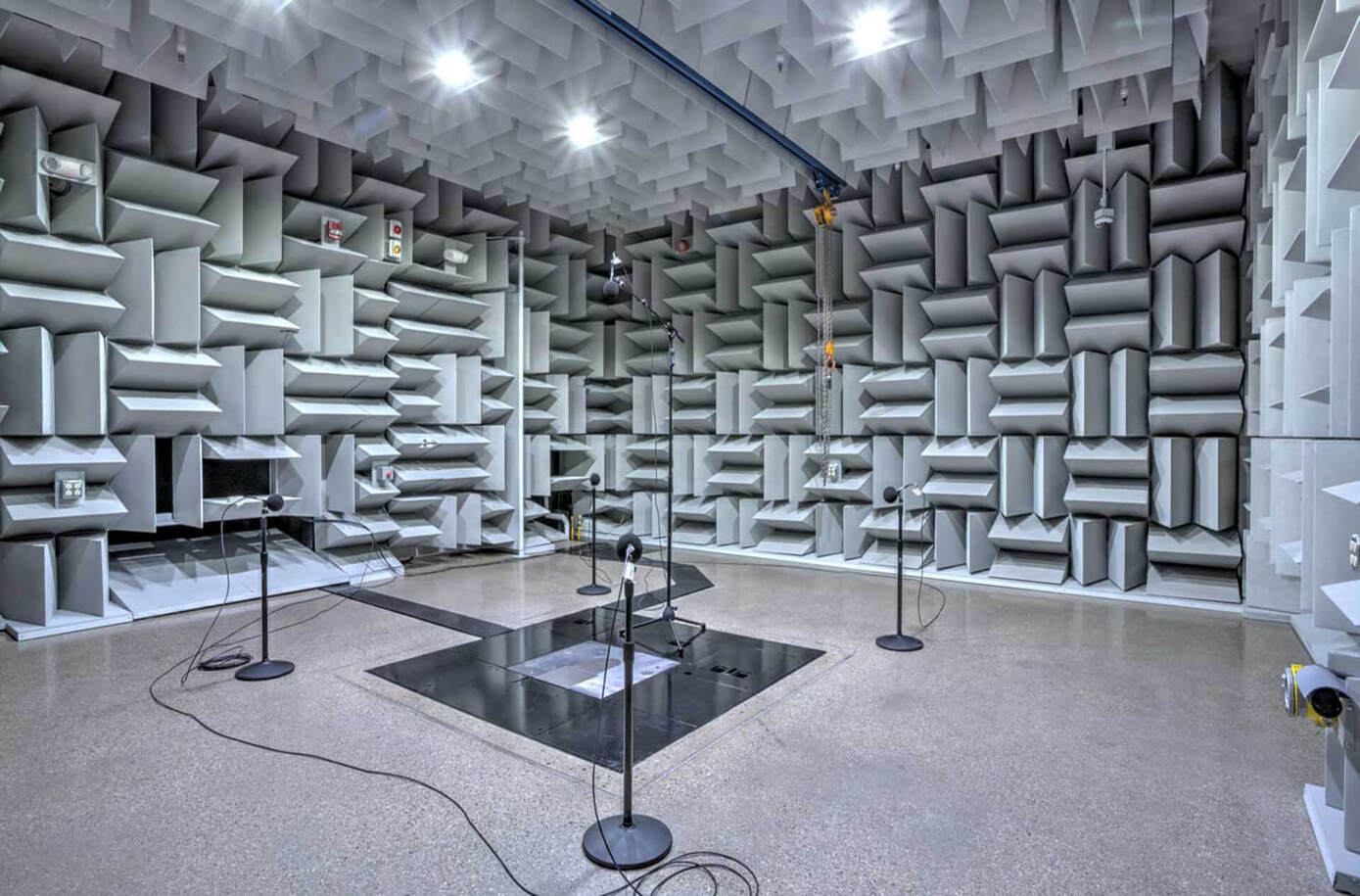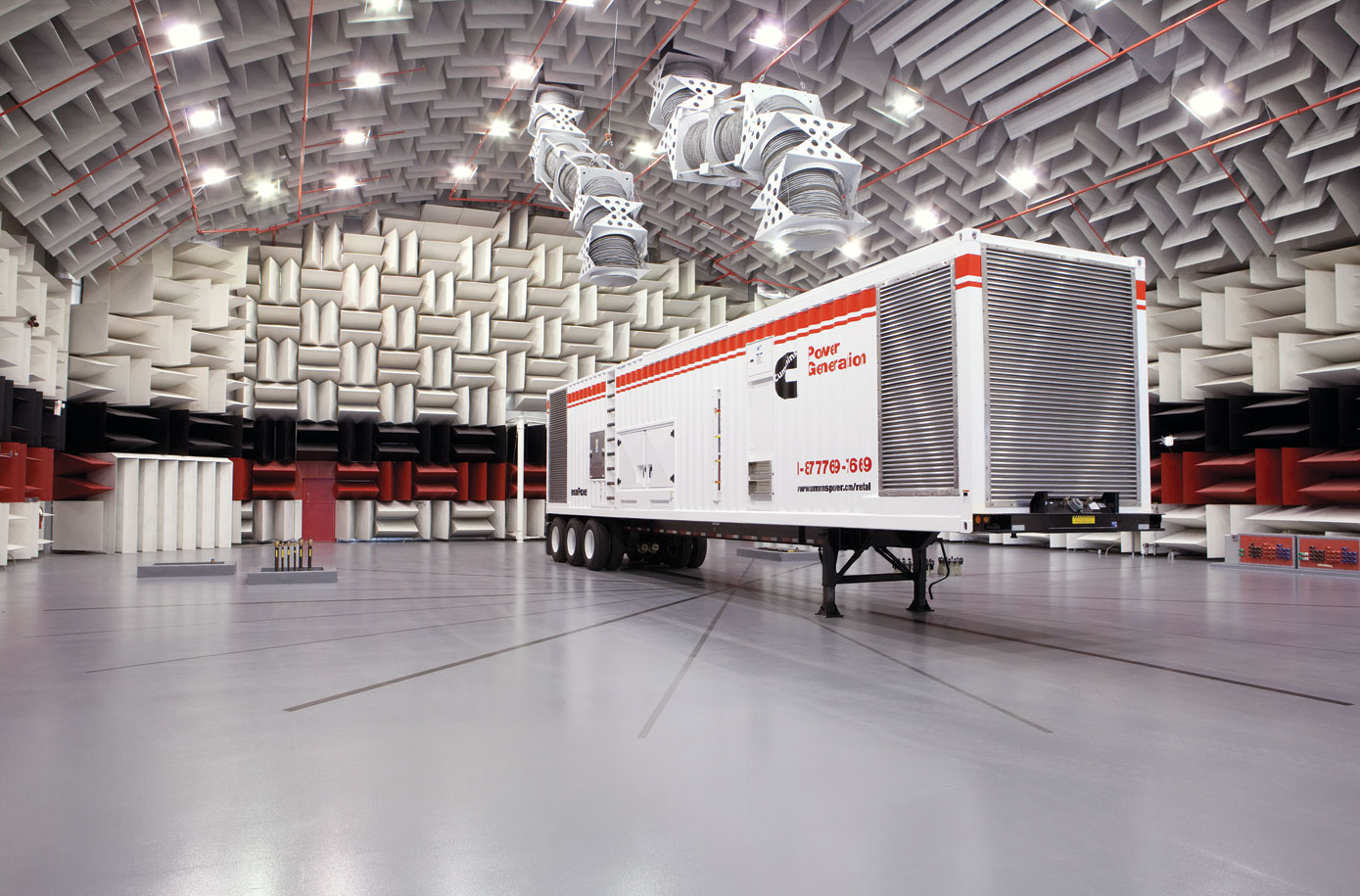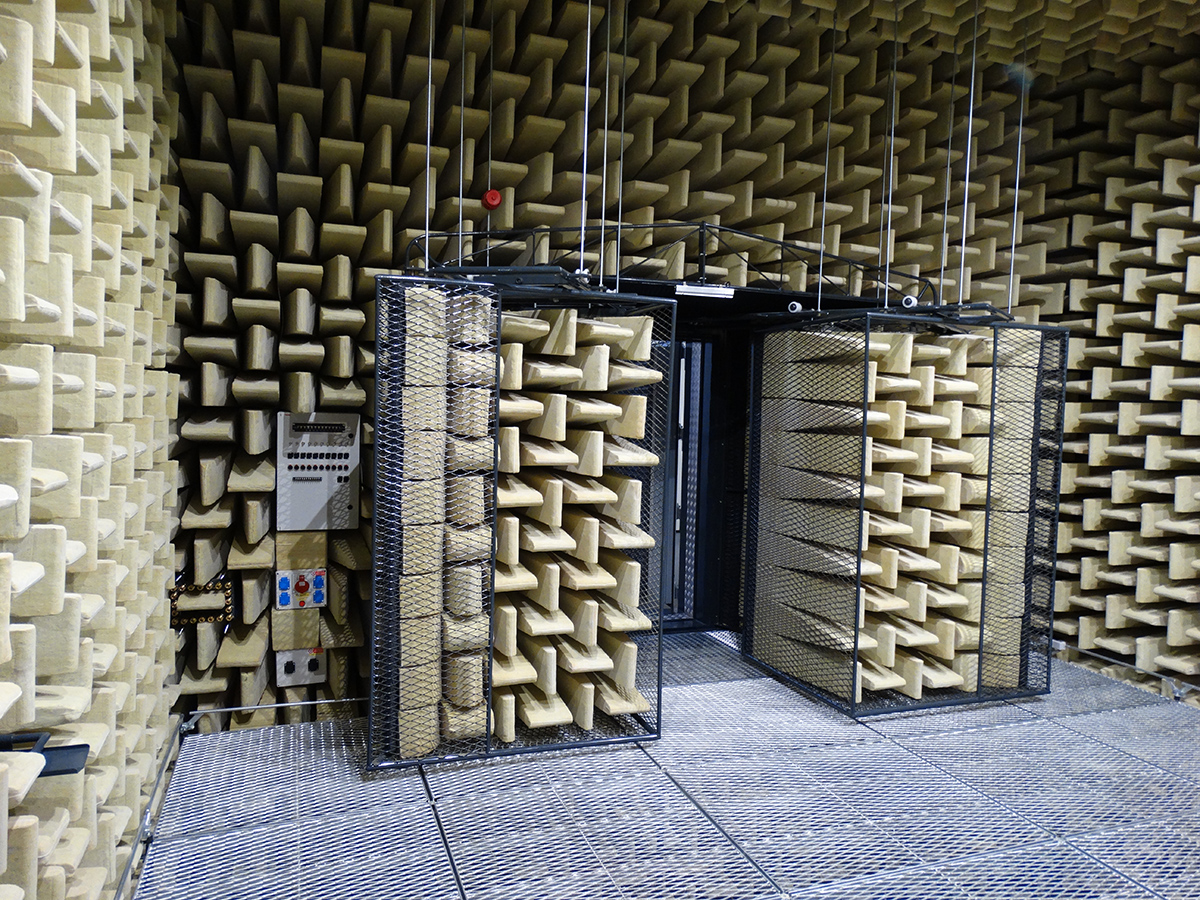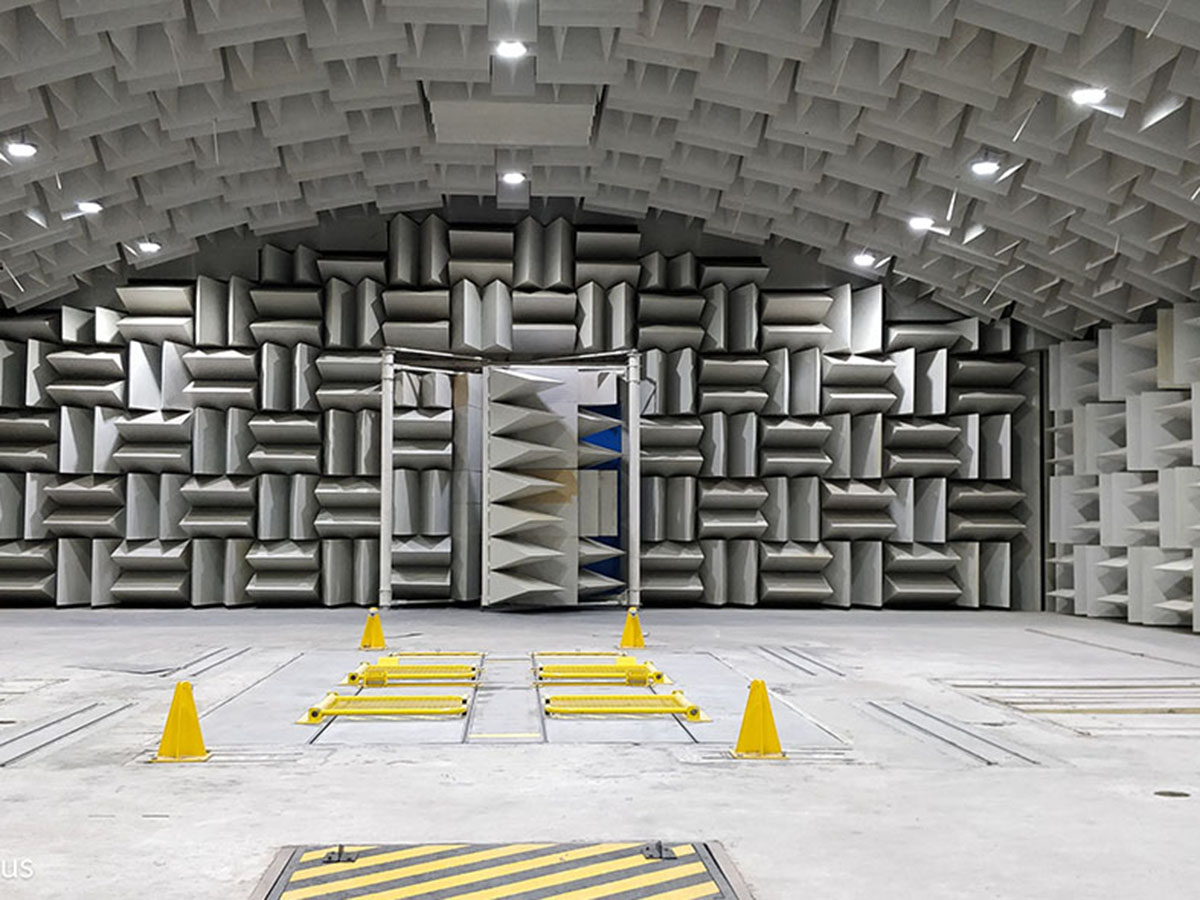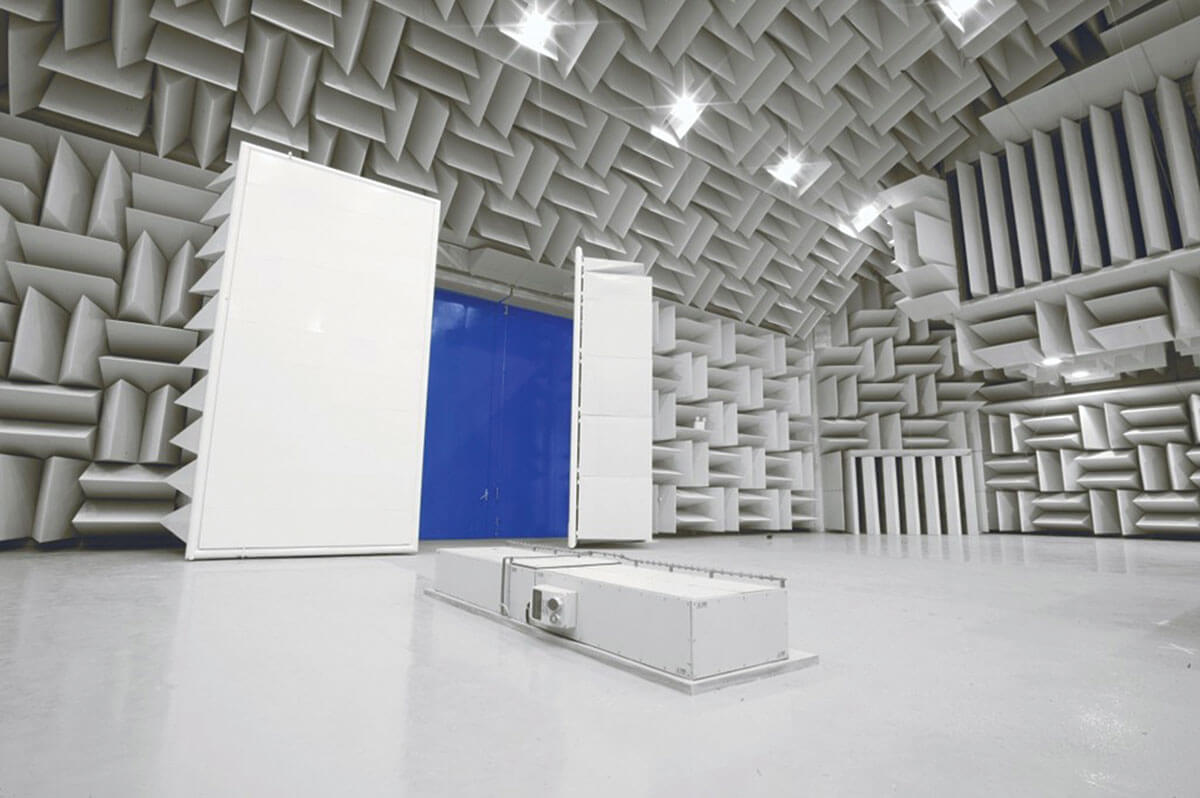An anechoic chamber can be considered similar to a precision acoustical measurement instrument, providing a free-field environment without noise interference or sound reflection.
In an ideal free-field environment, the inverse square law would function perfectly. This means that the sound level from a spherically radiating sound source decreases by 6dB for each doubling of distance from the source.
For a free field to exist with perfect inverse square law characteristics, room boundaries must have a sound absorption coefficient of unity at all angles of incidence. In practice this is usually not quite perfect and deviations from the inverse square law are to be expected.
Construction of Anechoic Rooms
For anechoic rooms to function well, a number of acoustic, mechanical, electrical and aerodynamic considerations apply. These will include some, or all, of the following:
Noise & Vibration Isolation Characteristics
A well constructed room must provide good sound isolation against external noise so that resulting internal noise will not invalidate acoustic measurements. This may require the use of single or doublewall construction with appropriately designed vibration isolation to adequately reduce air – and / or structure-borne noise transmission. For best results, anechoic facilities should be individual structures, separate from any host building walls
Anechoic Wedges
One practical well proven method to achieve a free-field is to shape sound absorbing material into wedge configurations for mounting on to the interior surfaces. The wedge shaped geometry ensures a gradual change in the acoustic impedance of the transmission media, ensuring that sound waves are absorbed by the material, rather than reflected at an interface. The effectiveness of the absorption depends on the geometry and materials used. The lowest frequency at which the absorption is effective (cut-off frequency) is inversely proportional to the depth of the wedge. Due to variations in material characteristics, statistical quality control measures are employed during wedge production to ensure specified acoustic performance.

